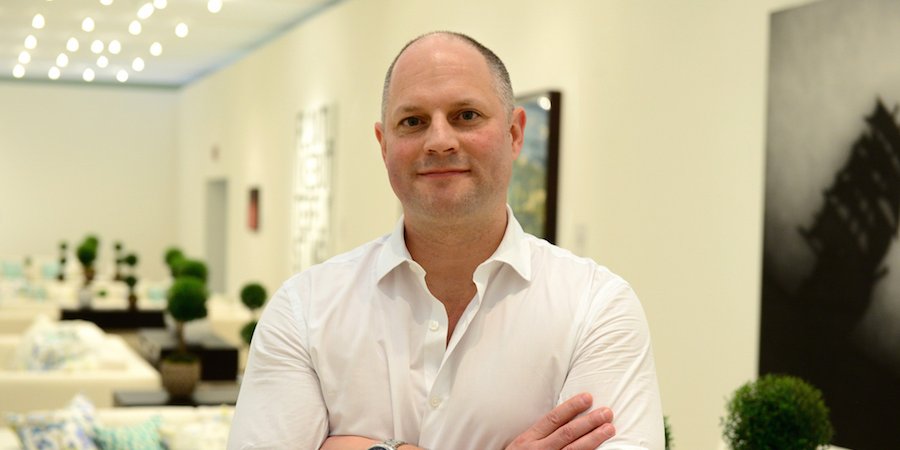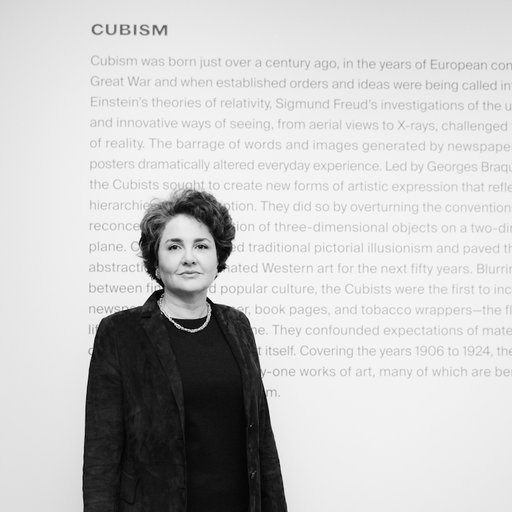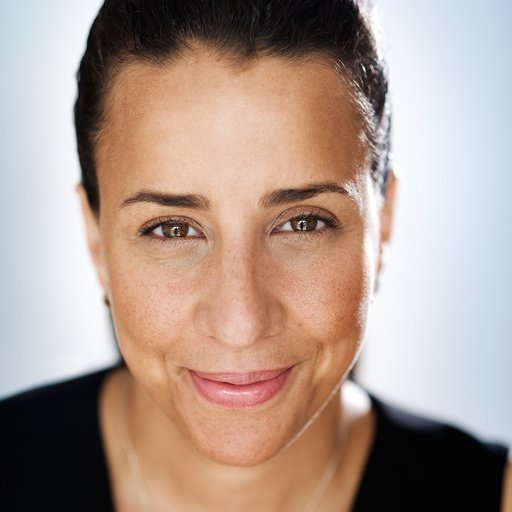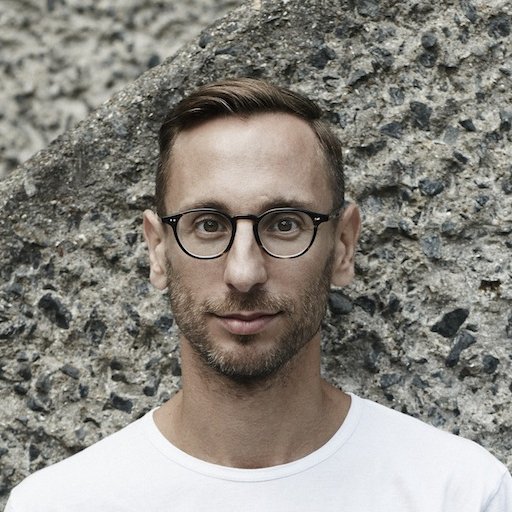This year marks the 20th anniversary of Swiss financial titan UBS’s sponsorship of Art Basel, and the intersection of the investment bank’s interests and the pursuits of the increasingly affluent world of contemporary art speak volumes about how culture works in the current moment. As a bank with a historic commitment to new art that began with the establishment of its own contemporary collection in 1964, UBS has generously contributed funding over the years not only to the Art Basel empire—Basel hosts one of the company’s headquarters, with the other in Zürich—but to such other institutions as the Fondation Beyeler, Copenhagen’s Louisiana Museum of Modern Art, and the Guggenheim, where it is currently sponsoring the UBS MAP Global Art Initiative. In addition to adding cultural luster to the UBS brand, these sponsorship programs also feed into the bank’s extensive wealth-management division, offering inroads to an area where the world’s best-heeled commingle: the art world.
This year, in time for Art Basel Miami Beach, UBS is debuting a new facet to its engagement with contemporary art, unveiling an iPad app called Planet Art that is designed to apply a financial analyst’s data savvy to the glut of art news pinging around the Web these days—it’s a truly valiant attempt to separate the signal from the noise that is eventually envisioned to become an iPhone app as well. To find out how, exactly, UBS approaches its art programs, Artspace editor-in-chief Andrew M. Goldstein spoke to Peter Dillon, the head of the bank’s art sponsorship platform, about the relationship between money and new wealth in the age of globalism.
How did you come to be the head of UBS’s contemporary art platform, and what does that entail?
I’ve been in the communications and branding group at UBS for about seven years, and art has always been part of the mix of what we do, with the UBS art collection as the backbone of those initiatives. I’m not a curator and I don’t have an art history background, but we have a team of curators who manage the collection of around 35,000 objects, who buy the art, who manage the loans to museums, and who dispatch the art to our offices in 800 buildings around the world.
Over the years we’ve also done sports programs and we’ve done extensive programs with symphonies all over the world, but as our businesses and marketing mixes changed over time we’ve really focused on two main platforms. One is Formula One and the other is art, and I oversee the art component of that. That includes the UBS art collection; the sponsorship portfolio of programs we support, like art fairs, the Guggenheim UBS MAP program, and many museums around the world; and also a group of advisors at UBS called the Art Competence Center, which is a service we provide for ultra-high-net-worth clients to help them manage their collections.
Why Formula One and art, and how do these two areas converge with UBS’s wealth-management and investment objectives?
They both work very differently, and that’s by design. Formula One has almost 500 million viewers on television every year, so it’s about broad-based brand exposure and awareness. It’s also a very exclusive sport—it takes a lot of money for teams to compete in Formula One—that has very high-end hospitality elements, so we entertain guests at different Formula One events around the world. The art platform, on the other hand, is a little bit more a part of who we are—part of the UBS DNA, if you will. Starting with the UBS art collection, we’re collectors and our clients are collectors. The target business client for UBS typically has things, whether they collect art or other objects, and this is a mindset that we can align with. We have that same passion. Also, the art communicates different things about who we are—it humanizes us in a different way than sports programs can.
Deutsche Bank is another financial institution that has a high-quality contemporary art collection, focusing on photography and works on paper, which allows them to have very concentrated holdings. How would you describe the contours of the UBS collection?
Ours is not that focused, in terms of works on paper or photography—it’s more a reflection of where UBS has grown over the last 50 years. As we grow in places like Latin America or Asia, we’ll buy work by artists from those regions, so we’ve been buying a lot of interesting Chinese and South Asian art made in the last five to 10 years, and the same thing in Latin America. It’s important to support artists from those regions and to put art in those spaces that is relevant to Latin America, Asia, or any other part of the world.
Also, as UBS has grown and combined with different companies, most of those companies have had art collections, so there are different parts of that coming together to form the UBS art collection today. But we’re still buying, we’re still growing that collection.
Why does the UBS collection focus on contemporary work?
That’s a legacy position—the focus has always been contemporary. But today we talk a lot about the idea that contemporary art is forward-looking and about the future, which can mean a lot of things—it can be inspiring, it can be challenging, it can be beautiful, but it’s really about having a progressive stance in the world. Contemporary art does that in a way unlike any other time period of art, even Modern and pre-Modern. It’s the most interesting period, in my opinion.
Looking back across history, banking institutions have always been sponsors of the art of their time, from the Medicis in Florence and the Chigis in Rome through J.P. Morgan. Does UBS see itself fitting into this legacy of patronage?
I’ll let you draw the comparison to the Medici’s. I wouldn’t necessarily draw that line, but I do like the word patronage better than sponsorship because sponsorship implies that it’s a negotiated deal and we’re getting benefits out of it. There are benefits, of course, but I think patronage has more to do with supporting an institution’s core mission and art for art’s sake, not for marketing purposes. If we do things for marketing reasons in the art world, it will never work—the art world will see it a mile away, they’ll go the other direction.
In terms of patronage, there are private individuals who are spending much more money than we spend in the art world, but we are trying to do things that have some legacy impact. The Guggenheim UBS MAP program consists of exhibitions, educational programs, and supporting curators with a new platform, but the legacy impact, I believe, would be the way we are growing the Guggenheim’s permanent collection. We’ve already placed almost 100 works now from Latin America and Southeast Asia in the permanent collection over about two years’ time.
As for the educational programs, those aren’t always the sexiest part, and they don’t get much press, but we’ve already brought at least a thousand kids through that program in New York, Singapore, and Hong Kong. We’re planning now for next year, in Latin America. Hundreds of schoolteachers and dozens of schools in Singapore and Hong Kong have now had the opportunity to experience the kinds of programs that might be familiar to us in New York or London and parts of the West, but that they don’t have over there. So patronage, I think, is a longer view. It’s about looking further into the future, rather than simply sponsorship.
It’s interesting that after the economic collapse of 2007, when the financial system was in disarray and the art market underwent an existential crisis, albeit a short-lived one, UBS continued its sponsorship of Art Basel. Why was art sponsorship important in a time like that?
The banking industry definitely had a crisis moment, and there was a lot of soul-searching at every bank, not just UBS. But something surprised me during that period: it was when times were bad that clients and client advisors all over the world wanted more of those types of programs, because when there are tough discussions to be made on the business side of things, client advisors were intently looking for ways to spend time with clients where they could have conversations about something other than the bank and the business. So we never wavered in our sponsorship of the art programs we were doing—anything that we moved away from during that period was simply a case of contracts that were up for renewal that were just impossible to renew contracts under those circumstances. But that’s a normal business cycle anyway. It was an interesting time for sure.
Now the financial sector is back in a tremendous way, and so is the art market, with buyers around the world spending $1.5 billion on contemporary art in a single week of auctions. If a bet was made on the art world, it’s been paying off in spades. Everybody wants to be at Art Basel, everybody wants to be associated with art. How is this benefiting UBS’s business side now?
My view is that the growth of the art market is fueled by the growth of wealth in general in parts of the world that haven’t seen that before, like China and India. A lot of people have a lot of cash that traditionally they would have put into investment vehicles, but the changing regulatory environment all over the world is creating uncertainty in the market, so they’re looking for new places to put that cash. As a result, there are new collectors all the time because of this increased wealth, and we’re positioned to meet that need by giving people access to places in the art world where they want to be. Any bank can get involved in art fairs, but because of the UBS art collection and the longevity of what we’ve done in the art world, we’re not any bank participating in the art world.
Tell me more about the advisors in your Art Competency Center—what do they do exactly?
These experts are not art dealers and technically they’re not exactly art advisors, but they will help conduct provenance research on artworks, bid at auctions for clients, help arrange sales with galleries and at art fairs, and help arrange insurance. They’re really a full-service art support network.
What about art as investment? Is that something the advisors work on with clients?
Actually, no. It’s a really clear line that we draw—we don’t look at art as an asset class, we don’t do art funds, and we don’t advise in investing in art funds as an institution. A lot of people do, be we don’t. Clearly art can act like an asset, but there are too many variables. No UBS banker would give investment advice on financial products based on the information you could get on the art world. You would never do that to your clients—it’s too speculative, and it’s not transparent enough. So we’re not going to say, “Buy that painting, it’s going to double in value over five years.” We think art is something you should buy because you’re passionate about it, because you love it. There are other ways to measure the value of art than auction results.
The MAP initiative—a three-phase program with the Guggenheim that focuses on the art of South and Southeast Asia, Latin America, and the Middle East and North Africa—seems to fit hand-in-glove with these growing pockets of new wealth developing in emerging global economies. Can you talk a bit about how it aligns with the mission of UBS?
It really comes from two sides, as a joint venture. The Guggenheim, as is the case with most Western museums, is significantly underrepresented in from these emerging regions. What most museums tend to do to counter this is to send an expert into the region to do field research, buy some art, and come back and put it in the museum. What we’ve tried to do with the MAP program is the opposite of that. The curators of these programs are from these regions and live in these regions, and they have a two-year residency where they spent a lot of time in traveling across them buying art, speaking, and building networks with artists, galleries, and institutions. This then becomes the basis for an exhibition they curate at the Guggenheim that afterwards travels back to the region. For an example, we’re currently in the Latin America phase of the project, with the survey of Latin American art “Under the Same Sun” that was at the Guggenheim through September about to travel to São Paulo and Mexico City.
On the UBS side of the equation, we have a significant presence in those regions, but—and this is something that our CEO said—you can’t truly understand or operate in those regions based on the business side alone. They’re too dynamic and fast-paced, and there’s too much history, too many variables. You need to have a holistic view to operate effectively in places like Brazil or India, and for UBS the MAP project is a way to provide that holistic view—the Guggenheim really brings in cultural expertise on these parts of the world. The politics, the culture, the religion, the language are all connected, and it doesn’t stop at the lines on the map. I mean, you can’t get Latin America by looking at spreadsheets and the P&L of companies.
How do the UBS bankers access the information that the curators gather? Do they only see it in the end product, the exhibitions?
It’s very involved, actually. Across that two-year residency we’re constantly in contact with the curator. Pablo León de la Barra, the curator for the Latin America exhibition, was in Zürich last week where we did two-and-a-half day art forum with a client program and a one-day employee program. And everywhere that Pablo travels, we try to link him with our local employees and our local audiences, and to tie in the project with the philanthropic things that we do locally, for instance educational programs at different levels. So, yes, there are the exhibitions where it’s always interesting to see great art, but it’s really very involved.
Looking at both sides of the program, how is it performing thus far?
It is successful based on any number of measures, and critically speaking the exhibitions have been very well received. Also, we can see real impact when you start to talk about the number of children who have been brought into museums, maybe for the first time, and can see their region represented in contemporary art. We can also see impact in the support that we have from our clients who want to attend these events and spend time with the curators. But we really have a longer view, and the true impact will be realized in 10, 20 years time in the Guggenheim’s collection and in what we’re doing.
Does UBS pay for all of the art that is acquired by the Guggenheim during this period?
We underwrite the whole program, so that includes all of the elements—the education, the acquisitions that are made.
What is the overall price tag for such a program?
It’s not something that I would want to get specific about. It’s a healthy amount, but it’s not out of whack for such a big program. It’s a global program, and it’s very ambitious.
This year, at Art Basel, you’re going to be unveiling a new aspect to UBS’s engagement with contemporary art: an iPad app called Planet Art that will gather, collate, and present the latest articles on art from around the web. What led you to develop an app that essentially puts you in the content business?
In a way, it’s really a simple idea. There’s a huge amount of nonstop information available in the art world, with a new art fair every week, a new blog, a new magazine, and more newsletters than you could possibly read—just this relentless onslaught of information. When we think of the spectrum of people that make up our target audience, it’s the expert on one end and then the people who need help accessing that expertise on the other. The experts don’t have time to go through everything, and the people who don’t know where to begin need a lot of help—they don’t stand a chance in making sense of that fragmented landscape of art information.
So Planet Art is an aggregator. It looks across that entire landscape of information available and analyzes the data in that information to pick out the objective elements of artists, people, places, and exhibitions, then organizes these to show what’s trending—what’s the top ranked article on a topic, for instance—to provide a distilled view of the art-world information out there. Right now we have a mixed basket of 30 online art sources that are representative of that landscape, and the app analyzes the information in each and presents it back to you. It’s not curated, there’s not an editor—it’s all machine based, guided by an algorithm that we’ve developed.
So why are we doing this? This is what we do as a bank. This is what we do as client advisors all over the world, employing our skill set of looking at vast amounts of nonstop data in the financial world, which is even more fragmented, and aggregating that information on on a topic like Latin America or China to present it to our clients in a simplified way to say, “This is what you need to know.” It’s deep, we can give you real depth of information, but our job is to simplify that into a distilled view.
So you’re applying the “what-you-need-to-know” template of, say, a white paper in the financial sector to framing the news?
We’re looking for ways that we can add value. We invest a lot in the art world and that adds value, but we want to add value in other ways. We also want to be modern and diverse in what we do. So this is about applying our same skill set as financial advisors to the art landscape. And we’re trying very hard to be objective. It’s not a new UBS art magazine, it’s not curated—the media are the curators. All we’re doing is organizing what they chose to write about into neater piles and presenting it in a simplified view. For experts, it’s the equivalent of reading 30 newspapers a day, and we believe it’s a real service.
























